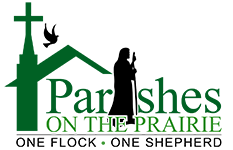What is the Transfiguration?
The Transfiguration of Jesus is one of the key events in Jesus’ life. He took three apostles – Peter, James, and John – up to a high mountain to pray. As they were praying, His appearance changed, and His clothes became “dazzling white.” At that point, Moses and Elijah appeared and spoke to the Lord about His upcoming death. A cloud overshadowed the group, and God the Father’s voice came from the cloud saying, “This is my Son, my Chosen; listen to him!”
The Church celebrates the Feast of the Transfiguration each year on August 6.
What was the reason for the Transfiguration?
According to St. Thomas Aquinas, the Transfiguration occurred because the divine glory which was Christ’s was allowed for a moment to shine through His human body. He did this so that they could taste for a short time the contemplation of eternal joy, in view of the persecutions they would suffer.
What does “transfiguration” mean?
Transfiguration refers to Our Lord’s change in appearance from the passable bodily form in which He would suffer and die, to the glorified form in which He would rise from the dead. The Latin root “trans-“ means “across” or “through.” The root “figura” means “form” or “shape.”
When did the Transfiguration happen?
This event happened approximately a week after Jesus and the disciples went to Cæsarea Philippi, which is where Peter declared that Jesus was “the Christ of God” (Luke 9:20).
Regarding the timeline of the Gospel events, the Catechism says, “On the threshold of the public life: the baptism; on the threshold of the Passover: the Transfiguration” (CCC 556). The Transfiguration did not happen immediately before Jesus’ Passion, but it is believed to be later in His ministry.
Where did the Transfiguration take place?
Although the Gospels only refer to it as a “high mountain,” according to tradition it was on Mount Tabor in Israel. Not too far from Nazareth, a Franciscan church commemorates the traditional site, where 4th century and 12th century churches had previously existed.
Who witnessed the Transfiguration?
The apostles Peter, James, and John witnessed this event. Pope Benedict XVI said:
The mystery of the Transfiguration must not be separated from the context of the path Jesus is following. He is now decisively oriented to fulfilling His mission, knowing all too well that to arrive at the Resurrection He must pass through the Passion and death on the Cross. He had spoken openly of this to His disciples; but they did not understand, on the contrary they rejected this prospect because they were not reasoning in accordance with God, but in accordance with men (cf. Mt 16:23).
It is for this reason that Jesus takes three of them with Him up the mountain and reveals His divine glory, the splendour of Truth and of Love. Jesus wants this light to illuminate their hearts when they pass through the thick darkness of His Passion and death, when the folly of the Cross becomes unbearable to them. God is light, and Jesus wishes to give His closest friends the experience of this light which dwells within Him.
What is significant about Moses and Elijah’s appearance at the Transfiguration?
In Matthew 5:17, Jesus says, “Think not that I have come to abolish the law and the prophets; I have come not to abolish them but to fulfill them.” The Law and the Prophets are the two main aspects of the Old Covenant, and Moses represents the Law, while Elijah represents the Prophets.
Was the Holy Spirit present at the Transfiguration?
Yes, all three Persons of the Most Blessed Trinity were present at the Transfiguration. St. Thomas Aquinas said, “The whole Trinity appeared: the Father in the voice; the Son in the man; the Spirit in the shining cloud.”
Reference: EWTN

